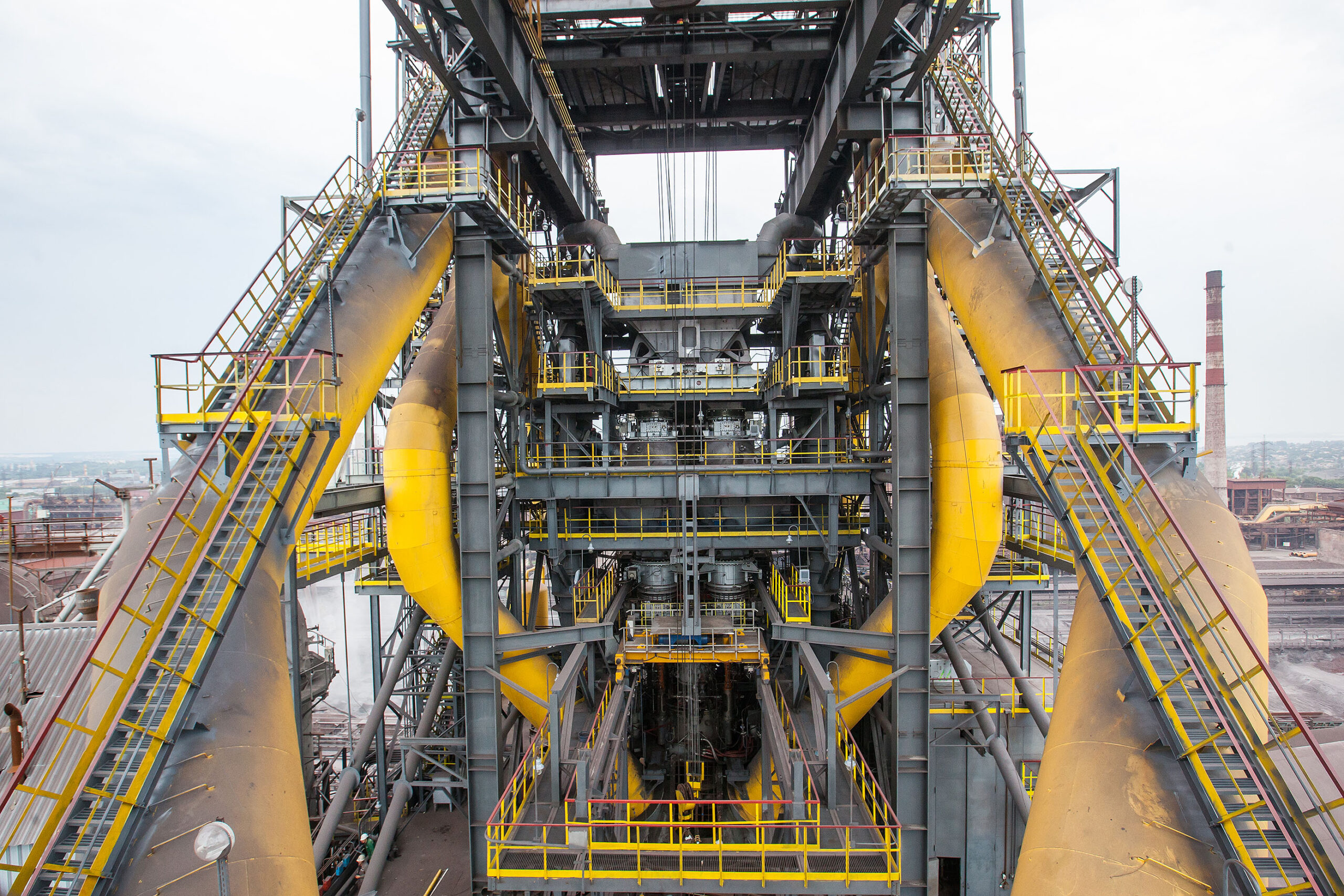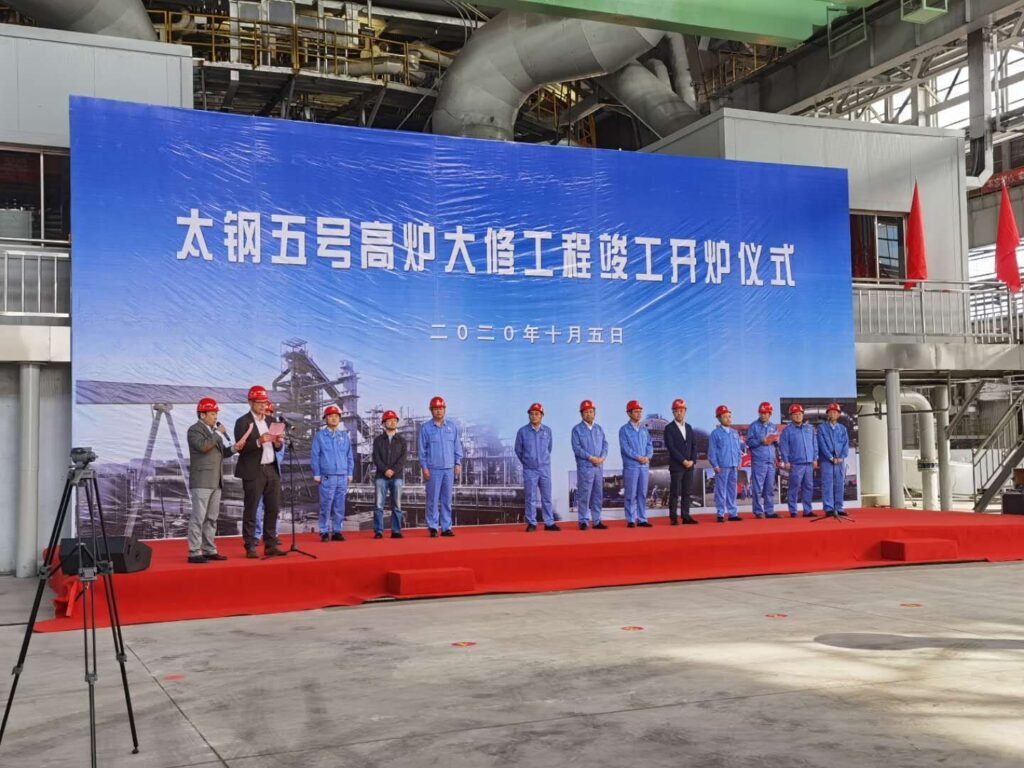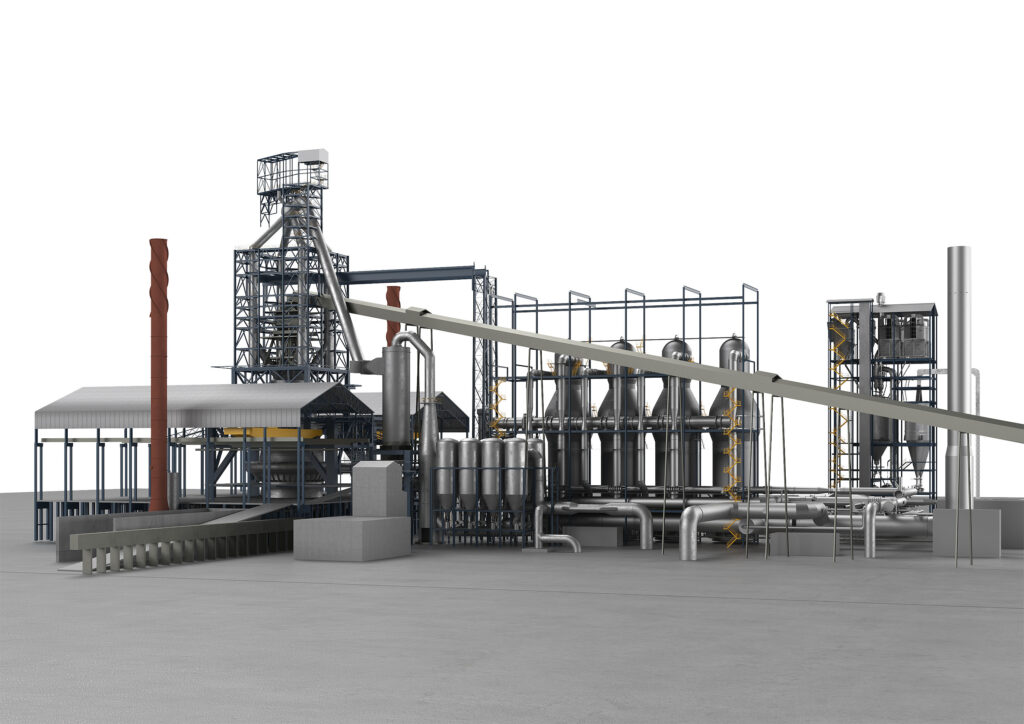Top Charging Systems with DANCU Gearbox
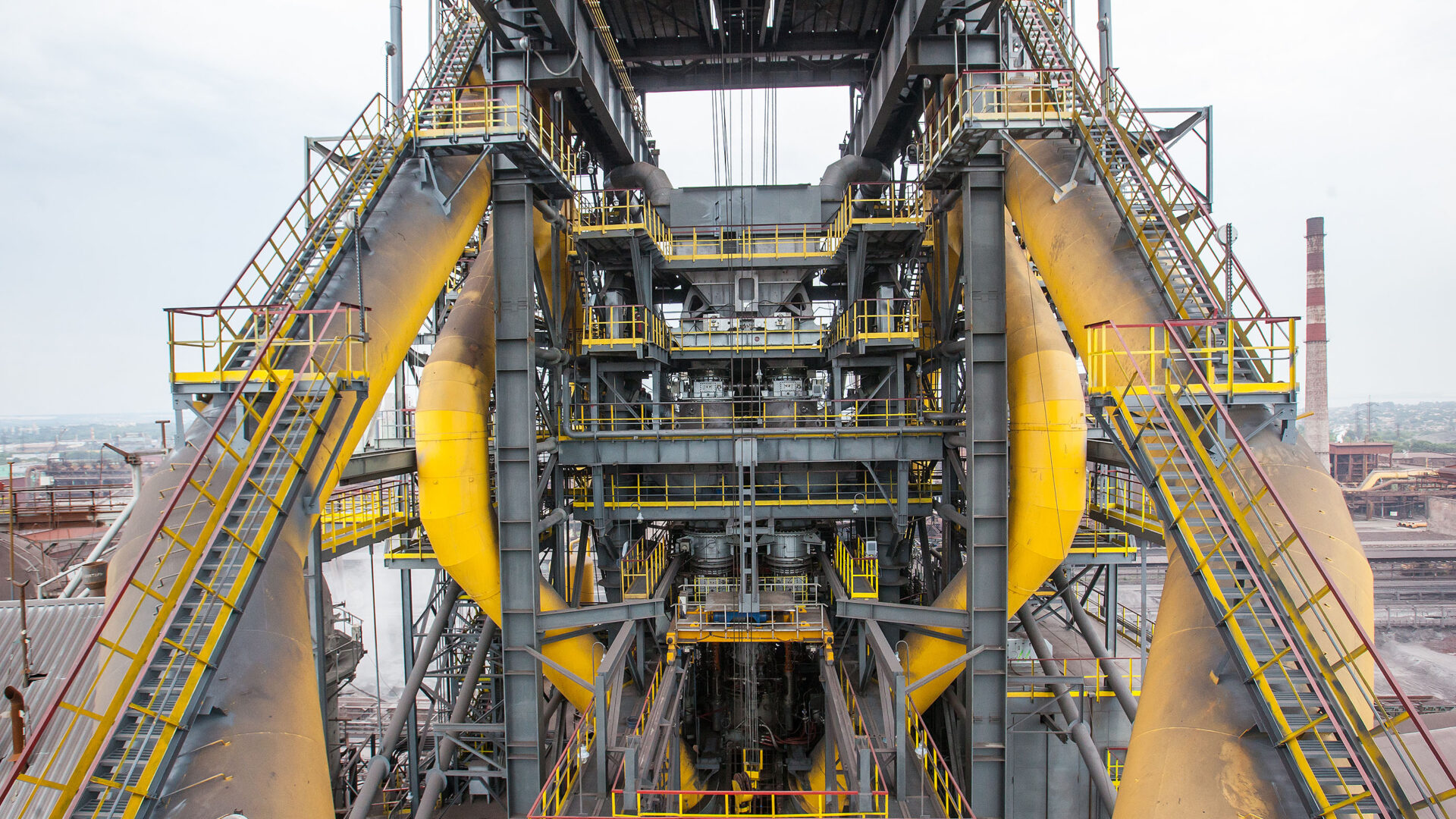
Chute–based charging has been one of the major enablers for optimizing blast furnace process efficiency over the past decades. With the DANCU gearbox and its integration concept, Danieli Corus has redeveloped top charging equipment to become failure–free and easy to maintain. The equipment is manufactured to the highest quality standards at the state–of–the–art Danieli workshops.
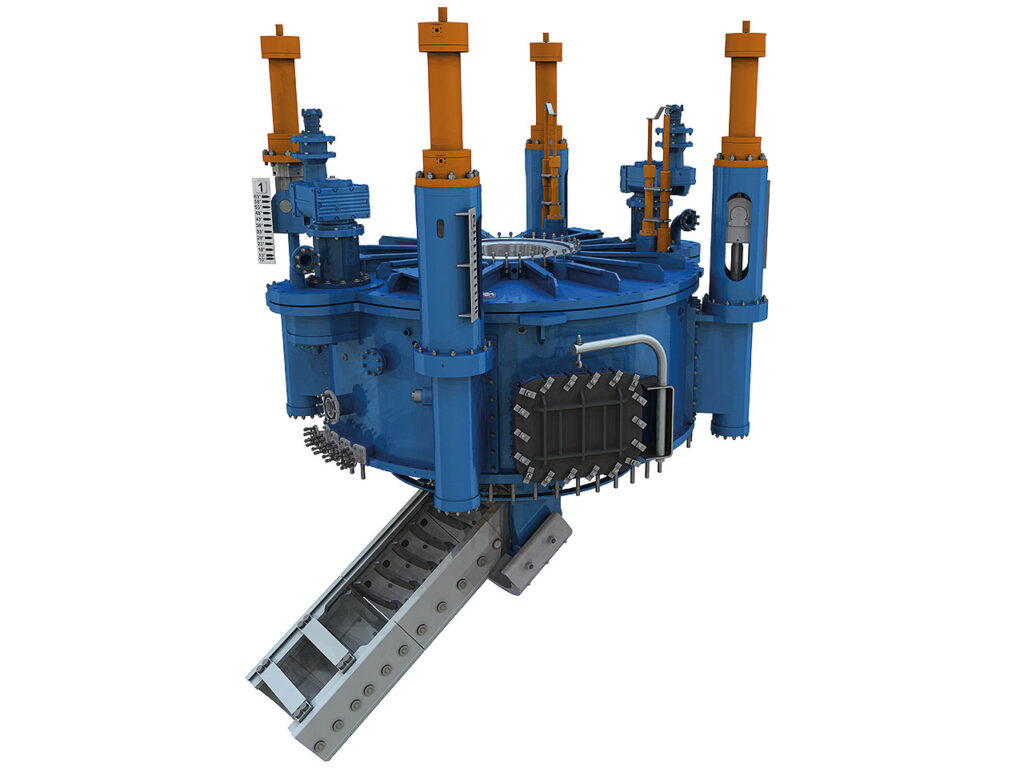
The DANCU Gearbox
All components of the DANCU gearbox are engineered and manufactured to be failure–free. The rotating and tilting movements of the chute are separated and achieved with a minimum of moving parts. Hydraulic cylinders are used for the tilting movement while rotation can be effected with either hydraulic or electric motors. The main bearing was designed with a maximized seat diameter to eliminate load inversions: the center of gravity of the chute is always within the bearing diameter.
The tilting angle is calibrated with simple positioning devices, offering very accurate control with high repeatability. The tilting limits are at 10° and 63° and the cylinders enable the use of a simple mechanical lock. This eliminates the requirement for a complex mechanical lock, which has been a cause of damage with traditional designs. And with hydraulic technology, there is no risk of tilt angle drift over time.
Maintenance Concept
Exchange of heavy equipment is time–consuming and scheduled activities are debottlenecked as far as possible. For the top charging equipment this means that the distributor and large valves need to be replaced within the time required for other maintenance in order to not cause additional delays. With the Danieli Corus top charging unit, special cranes are applied and the lay–out is adjusted to improve accessibility through e.g. the application of sliding rail designs for the easiest, safest and quickest replacement of system components. Removing and re–attaching the chute is performed conveniently with a simple, straightforward locking device and a manual tilting drive that is operated from outside the furnace through the manhole of the DANCU distributor.
Lubrication is ensured by a fully automated system with sensors indicating the use of sufficient volume per position. No replacement of cartridges is required as all systems are connected to the central supply system. The use of this type of system further minimizes maintenance.
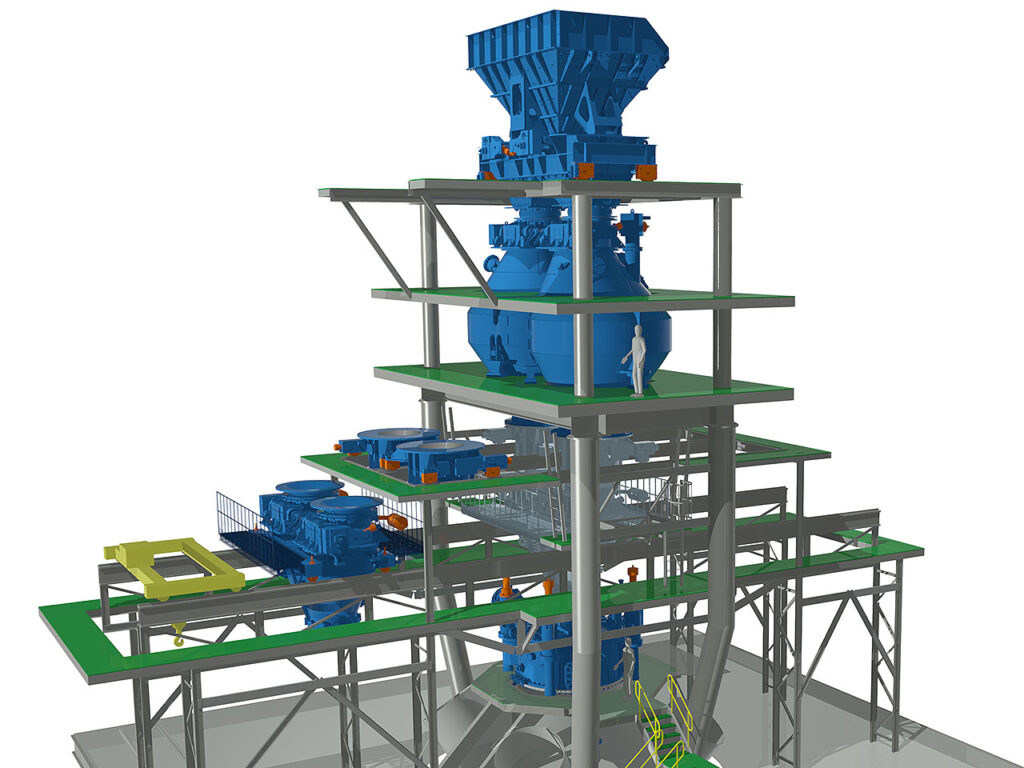
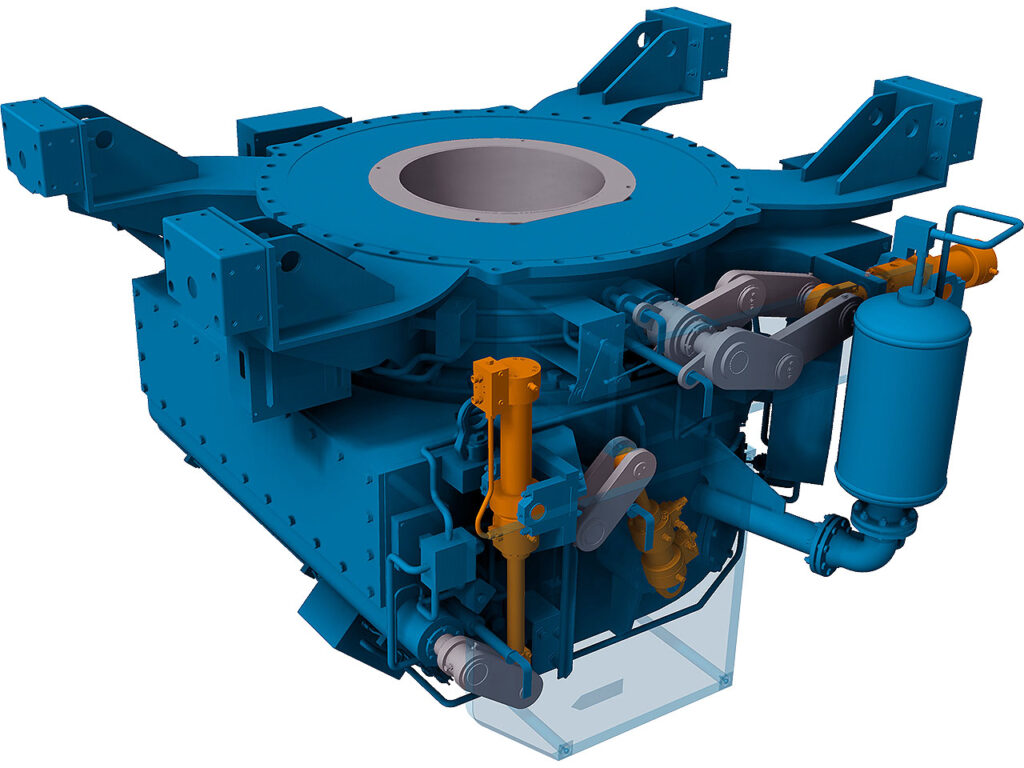
Space Restrictions
At smaller and medium sized blast furnaces, space restriction may hamper the implementation of chute–based charging, primarily since modifications to the skip bridge are often required. Starting from a slightly reduced maximum chute length in line with requirements in this furnace size class, gearbox body height can be reduced by nearly 800 mm. A compact combination valve was developed, integrating the functionality of the material gate valve and seal valve to reduce total system height by another 900 mm. This combination valve is positioned below the material bin. In cases where the hopper acts as a buffer, the same combination valve will also be used above the material bin.
Danieli Corus offers maximum flexibility in designing the general arrangement for the top charging system and will work towards solutions for the hoppers, bins and valve systems to achieve an optimum fit in each and every situation
Featured references
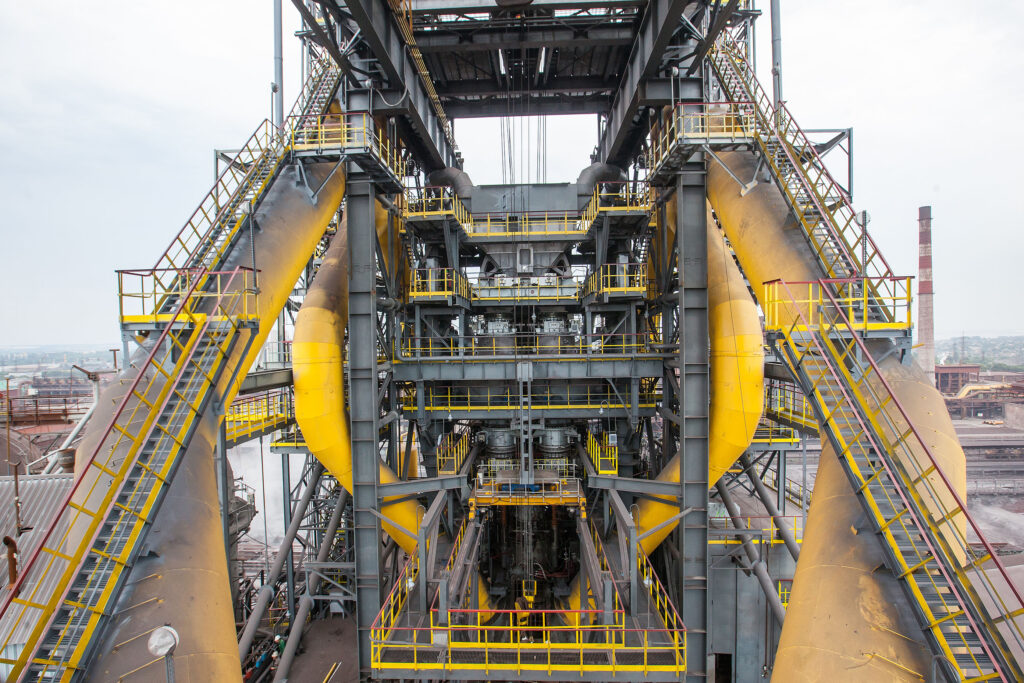
Top Charging System with DANCU Gearbox for Zaporizhstal Blast Furnace No. 3
Systems
4
Coke Rate Reduction
5 %
Productivity increase
10 %
PCI rate increase
10 %
The New Industry Standard
With a focus on reliability and maintainability, Danieli Corus has developed the next–generation top charging system for blast furnaces. Through simplicity of design, we have achieved maximum availability and straightforward maintenance.
- Improved design and manufacturing
- Separation of rotation and tilting improves reliability and simplifies maintenance
- Redundancy improves reliability and availability
- Operational assistance, training and remote performance monitoring are available
- The system can be implemented at smaller and medium–sized furnaces with minimum changes to the top structure and skip bridge
